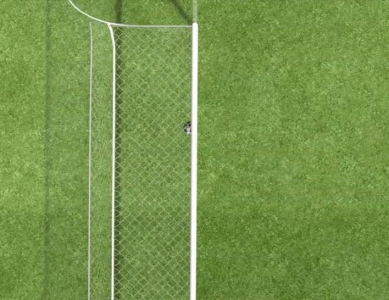
‘Canal+’, during its broadcast of ‘El Clasico’ in Poland, used technology to analyse Lamine Yamal’s ‘ghost goal’ against Real Madrid. The conclusion was that the ball, after the home-grown player’s back-heel, did not cross the line completely, so the VAR got it right from Las Rozas despite not having the most accurate tools to do so.
Before the half hour mark of the ‘Clasico’, controversy struck. Raphinha, from the same corner from which he assisted in the 0-1 scoreline, put in a low, short cross that found Lamine Yamal at the near post. The home-grown player tries to beat Lunin with a back-heel finish. The Ukrainian reacted and, with his gloves on the line and part of his body inside his goal, parried ball that, once again, ended up in the corner.
Barcelona immediately appealed for a goal and Soto Grado, the referee for the match, stopped a corner kick from being taken while waiting to hear instructions from the VAR. In the absence of goal technology, the VOR room spent several minutes watching all the possible shots from the cameras in the Santiago Bernabeu. Finally, the referee ordered the corner kick to be taken after the images, although not as clear as they should have been, seemed to show that the ball did not go in.
They did have the right technology on ‘Canal+’. During the broadcast in Poland, the channel analysed the play and was able to show with a virtual reconstruction of the action that the ball did not go completely over the goal line.
Thus, Lunin arrived in time to parry a ball that was one part short of going into the net. The position of the Ukrainian goalkeeper, who was almost entirely behind the line, and the hiding of the ball with his body in what would have been the best shot sowed doubts, dispelled by this channel shortly after the action with means, possibly, desirable for use in the VOR room.

